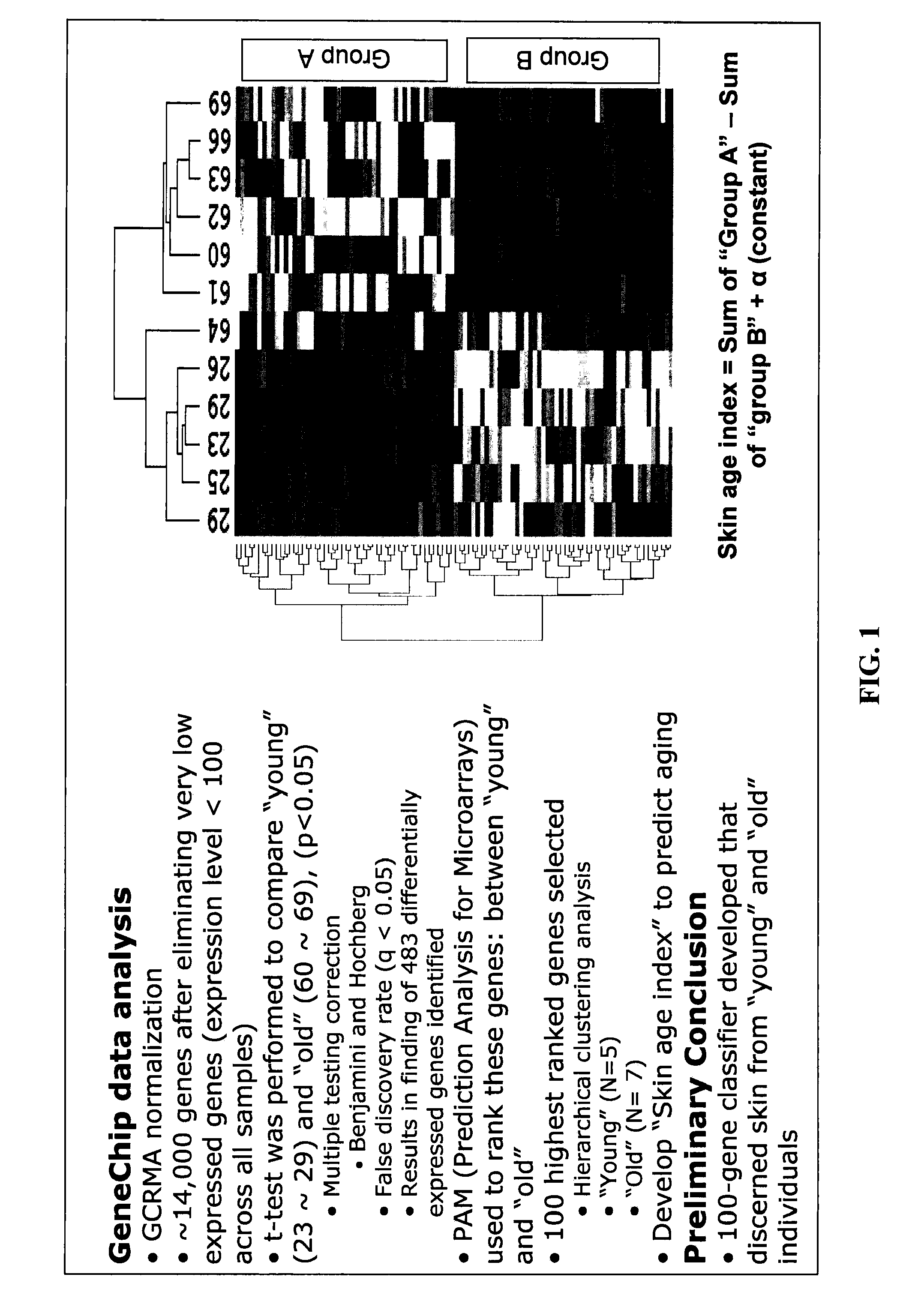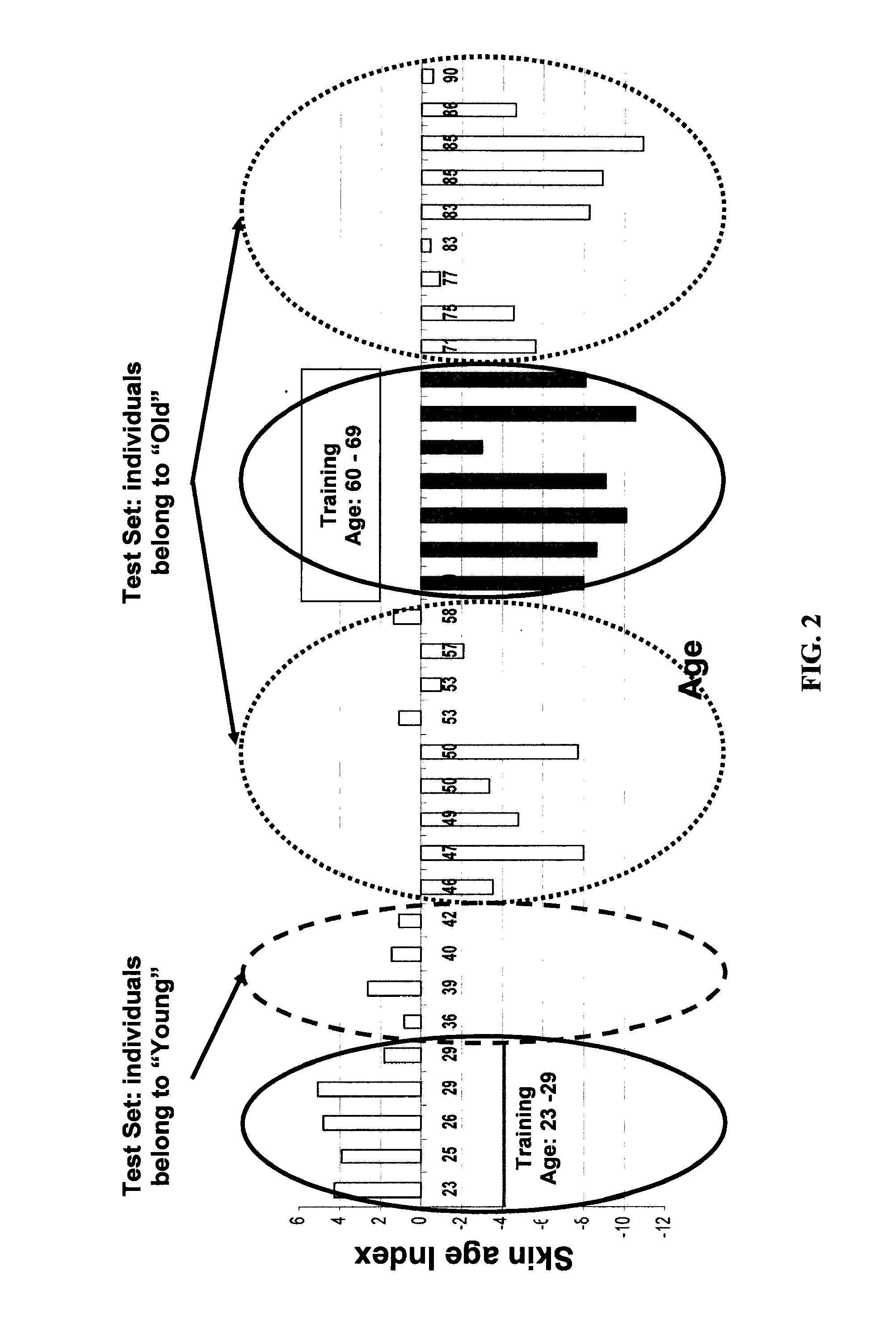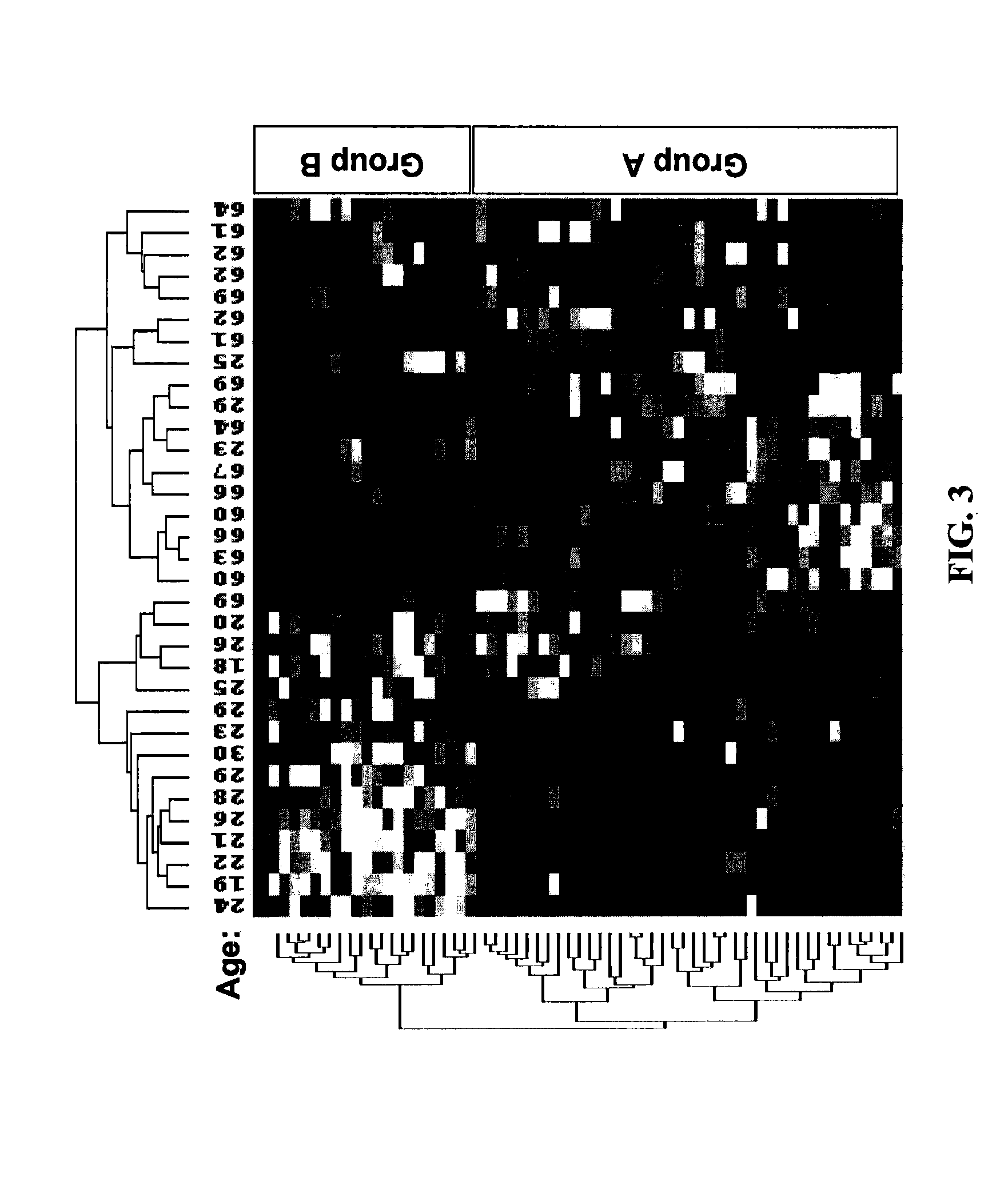Determining Age Ranges of Skin Samples
a skin and age range technology, applied in the field of skin sampling, can solve the problems of increasing homeostatic imbalance, increasing the risk of disease, and inevitably irreversible series of changes, so as to reduce or increase the expression of genes, monitor the severity and progression of photoaging and/or chronoaging, and reduce or increase the expression.
- Summary
- Abstract
- Description
- Claims
- Application Information
AI Technical Summary
Benefits of technology
Problems solved by technology
Method used
Image
Examples
example 1
RNA Quantitation and Profiling
[0091]This study is divided into two separate phases, a sample collection and characterization phase (phase 1) and an RNA profiling phase (phase 2). In phase 1 the tape stripped specimens and biopsied sample collections were performed by the principal investigator or trained individuals delegated by the principal investigator to obtain the biopsy sample at various sites. The RNA profiling phase (Phase 2), includes, but is not limited to RNA purification and hybridization to DNA microarrays for gene expression profiling.
[0092]Materials and reagents. Adhesive tape was purchased from Adhesives Research (Glen Rock, Pa.) in bulk rolls. These rolls were custom fabricated into small circular discs, 17 millimeters in diameter, by Diagnostic Laminations Engineering (Oceanside, Calif.). Human spleen total RNA was purchased from Ambion (catalogue # 7970; Austin, Tex.). RNeasy RNA extraction kit was purchased from Qiagen (Valencia, Calif.). Reverse transcriptase, P...
example 2
Tape Stripping to Recover Nucleic Acids from Skin
[0108]The following procedure was used to recover nucleic acids from normal skin (e.g., the mastoid or upper back areas) of a subject.
[0109]Tapes were handled with gloved hands at all times. A particular site that is relatively blemish-free and healthy was located, unless otherwise specified by the protocol. Preferred normal skin sites are the mastoid process (the bony process behind the ear at the base of the skull) and the upper back, immediately superior to the scapular spine. Shave the site if necessary to remove non-vellus hairs. The site was cleansed with an alcohol wipe (70% isopropyl alcohol) and let air dry completely before application of the tape. The tape was then applied to the skin site. If more than one tape was used, application was in sequential order starting from the left side. A surgical skin marker and / or a water soluble marker was used to mark the location of the tape on the skin in order to align subsequent tape...
PUM
| Property | Measurement | Unit |
|---|---|---|
| Area | aaaaa | aaaaa |
| Adhesivity | aaaaa | aaaaa |
| Area | aaaaa | aaaaa |
Abstract
Description
Claims
Application Information
 Login to View More
Login to View More - R&D
- Intellectual Property
- Life Sciences
- Materials
- Tech Scout
- Unparalleled Data Quality
- Higher Quality Content
- 60% Fewer Hallucinations
Browse by: Latest US Patents, China's latest patents, Technical Efficacy Thesaurus, Application Domain, Technology Topic, Popular Technical Reports.
© 2025 PatSnap. All rights reserved.Legal|Privacy policy|Modern Slavery Act Transparency Statement|Sitemap|About US| Contact US: help@patsnap.com



